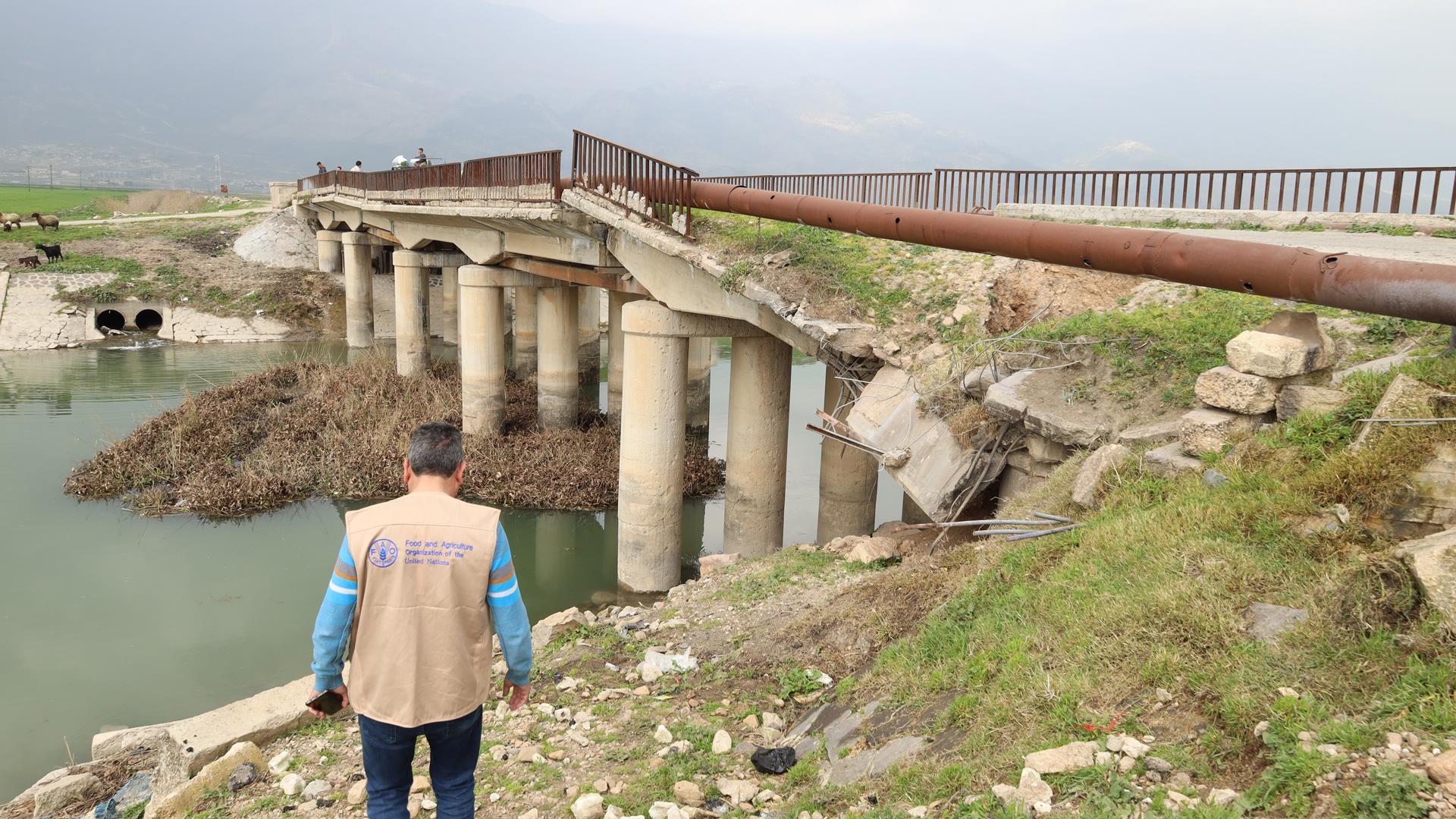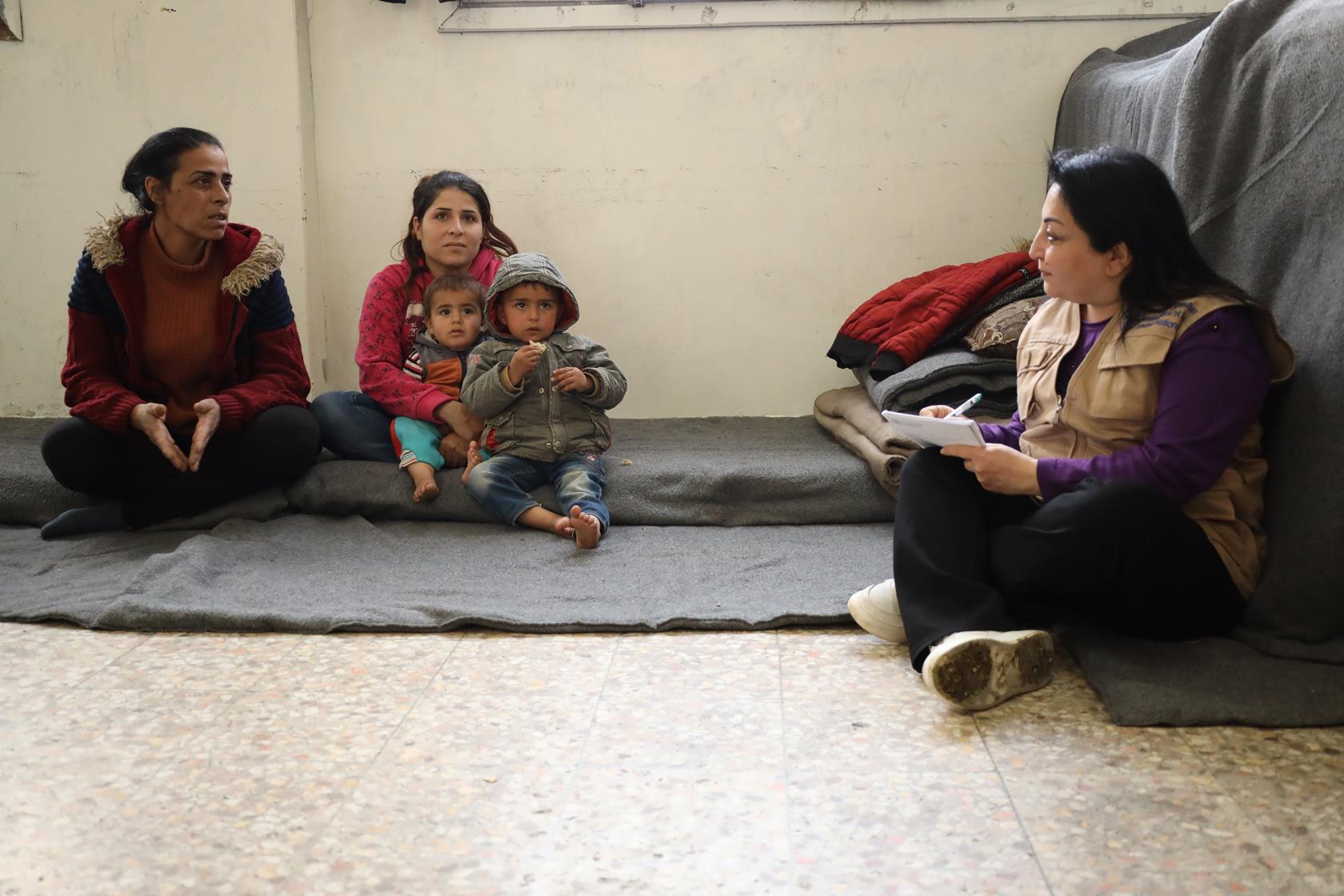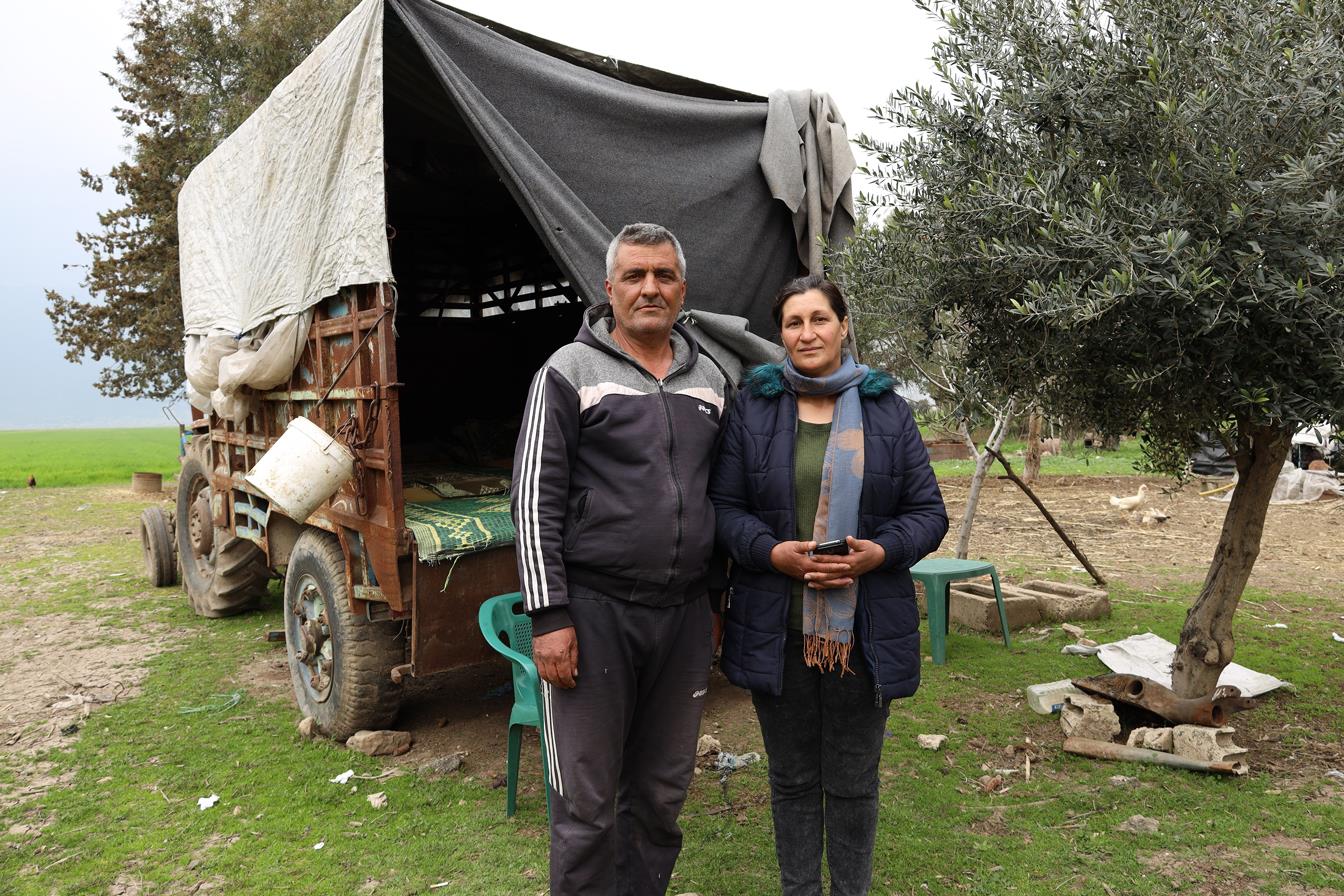
Seismic challenges for rural families in Syria
FAO is helping earthquake victims resume food production and agricultural livelihoods
A 7.8 magnitude earthquake, and numerous powerful aftershocks, devastated Syria and southern Türkiye, causing structural damages to homes, sheds, roads and bridges. In Syria alone, the earthquake has killed thousands of people and displaced more than 100 000 households. © FAO/Mazen Haffar
27/03/2023
Baraa Al Ali had already lived through a lot when the earthquake struck Syria and Türkiye on February 6.
The 44-year-old mother of six from Al Ghab, a district in the governorate of Hama, had been forced to flee her home several times during the 12 years of the Syrian conflict and had been relying on her four sheep to feed her children since the death of her husband, four years ago.
The 7.8 magnitude earthquake caused structural damages to Baraa's home, forcing her and her children to relocate to a shelter, which they currently share with 40 other rural families from their area. The seism also destroyed their shed, trapping and killing the sheep inside.
“We have experienced nothing but displacement and uncertainty for several years, but at least I knew I would eventually return to my house to herd my sheep and feed my children. Now that I have lost everything, I am blessed to have my children alive, but I do not know how I will feed them,” Baraa said.
Baraa is not alone.
In Syria, the earthquake has killed thousands of people and displaced more than 100 000 households, according to the United Nations Office for the Coordination of Humanitarian Affairs (OCHA).
The impact on the residents of Al Ghab, most of whom rely heavily on agriculture for their livelihoods, was devastating. In addition to the years of armed conflict, families in Syria have suffered from floods, extreme weather conditions, soaring food prices and limited access to markets, even before the earth shook.
Those farmers who did not lose their lives or homes are facing other problems: the death of their animals, aborted calves or reduced milk production because of their animals’ trauma, all of this damaging their only source of income.


Left/top: Baraa and her children were forced to relocate to a shelter with 40 other rural families from their area. Right/bottom: Even the cows and other animals were traumatized by the earthquake. This has affected their production of milk and threatens
Traumatized people and livestock, collapsing bridges
Aida Sultan, a farmer and herder in Hama, has now resorted to living in a truck with her husband after their home became unsafe as a result of the earthquake.
“We are afraid of another earthquake, so we have decided to make this truck a place to sleep safely, as we are very frightened,” Aida explained.
The family of six depends on milk production for their living. Of the two cows and one calf they owned, one cow died when their shed collapsed. The other adult cow now produces just six litres of milk a day, instead of the 25 it used to produce.
It isn’t just homes and sheds.
The earthquake has ripped through everything, including roads and bridges. Near Aida's home, the Shat’ha Bridge serves as a vital connection between her community and others. This critical bridge was already damaged during the conflict but was still usable. Now, the earthquake has caused new cracks, making it very dangerous to cross. But the villagers have little choice. The alternative route is 18 kilometres long, meaning the additional five to seven kilometres needed to reach nearby towns and markets would significantly increase transport costs for a community that is already struggling to pay for fuel.

Farmer and herders, Aida and her husband have resorted to living in a truck after their home in Hama became unsafe due to the earthquake. To address immediate needs, FAO is supporting rural people in Syria with livestock assistance and agricultural inputs to rebuild their lives and livelihoods. ©FAO/Mazen Haffar
Resuming food production and livelihoods
FAO’s initial assessment of the areas affected by the earthquakes shows significant loss of livestock and major damage to agricultural equipment and infrastructure including greenhouses, irrigation, storage facilities, as well as food and feed production facilities, among others. All these factors are disrupting crop and livestock production and threatening people’s immediate, as well as long-term, food security.
FAO’s priority in Syria is to ensure that rural communities can recover basic food production and resume their agricultural livelihoods. In this light, FAO will be supplying farming inputs (animal feed, seed, seedlings, fertilizer, fuel, tools, equipment), veterinary care (livestock treatment and vaccination) and unconditional cash transfers. The Organization is currently assisting 17 880 rural families (107 280 people) through the provision of fodder to livestock keepers in Aleppo, fertilizers to farmers in Lattakia and support for the rehabilitation of canal irrigation in Hama.
Related links
- News: Türkiye-Syria earthquake: farmers are in need of immediate assistance
- Website: FAO country profile: Syrian Arab Republic
- Website: FAO in emergencies: Syrian Arab Republic
- Website: FAO in Syria

